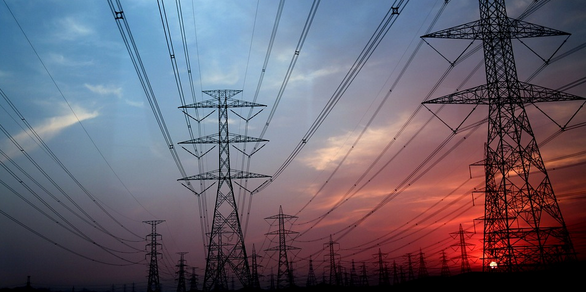
Offshore Wind on the Electric Grid: Emperor’s New (50%) Energy Source
In 2021, the Rhode Island General Assembly passed and Governor Dan McKee signed a law that mandates for the state net zero greenhouse gas emissions by 2050.
What this would mean in real terms is, no more fossil fuels for Rhode Island. No gas or diesel to power our vehicles. No heating oil, natural gas or propane to heat and cool our homes and buildings or power any activity in the state.
And none of those reliable fuels to power Rhode Island’s electric grid.
So what are we supposed to use in place of those critical fuels? Well, the Act on Climate law doesn’t say, presumably because the governor and the legislators who voted in favor of it lacked the courag … er, chose to hand that critical matter over to an unelected body, the Climate Change Coordinating Council.
This Council has identified these alternative sources to reliable fossil fuels:
offshore wind, land-based wind, wholesale solar, and retail solar
And as you have probably seen in the news, state leaders are going in big on offshore wind.
Here’s the issue. Offshore wind has serious downsides that make it non-feasible as a primary energy source. (In addition to turbine blades that can break.)
1. Cost – Very High
Offshore wind is a really expensive way to generate electricity. Over three times more expensive than natural gas.
The US Energy Information Administration reports that offshore wind is one of the most expensive forms of electricity generation, estimating that in 2026, producing one megawatt-hour of electricity from offshore wind will likely cost about $121–almost double the cost of generating that same amount of energy with an advanced nuclear reactor ($69), more than three times the projected cost of producing it with natural gas ($37), and even more than coal ($73).
Here are some of the factors that make it so expensive.
That cost is picked up by both taxpayers, in the form of tax subsidies, and by rate-payers. And Rhode Island already has some of the highest electric rates in the country.
Its very high cost, accordingly, makes offshore wind a non-feasible source of energy altogether, not just as a primary source.
2.) Generating capacity – Limited
Generating capacity is more formally known as “capacity factor”. The EIA projects that offshore wind’s capacity factor WILL BE 50-58%. So that’s on the optimistic/high side.
Looking at actual performance, offshore wind’s capacity factor from 2010 to 2022 was 42%.
And in 2017, Rhode Island Office of Energy Resources used a capacity factor for offshore wind of 48% in its “Rhode Island Land-Based Wind Siting Guidelines” (Page 9).
Let’s call it 50%. So the proposal by our elected officials – and let’s be clear, this is their doing, much as they would like to pretend it is someone else’s – is to power our vital electric grid and eventually, all major sectors like transportation, HVAC, medical, all businesses, heavy highway construction, etc, with a source that generates power 50% of the time.
How’s that going to work? It won’t, of course. And using natural gas as a “balancing resource”, as a few have proposed, is not a solution as it violates the Act on Climate law. (Not a zero emissions source; sorry.)
Combine it with solar? Nope; solar has a maximum capacity factor of 17%.
Another complication of offshore wind: energy experts on both sides of the issue agree that a significant industrial battery capacity needs to be added to the grid for renewables to work. But the exorbitant cost, resource constraints and ramp-up time of adding such capacity make this at best a dubious proposition for Rhode Island’s electric grid and rate-payers.
In short, offshore wind is neither adequate nor feasible to power the grid, even without adding the demand from all other state activity, as our elected officials envision.
Two con men pretended to weave the emperor beautiful cloth, from looms that were actually empty, to make him a very expensive, magnificent and ultimately non-existent new outfit.
Unlike the emperor, however, Rhode Islanders do not have the luxury of indulging in an expensive fantasy about the amount of power on our electric grid.
Featured image by AshrafChemban via Pixabay

[…] Because offshore wind generates power at most only 50% of the time. […]
Thank you for pointing out the folly of off-shore wind generated energy. This whole program will come crashing down, but only after the dishonest politicians who used the issue to get elected are long gone .